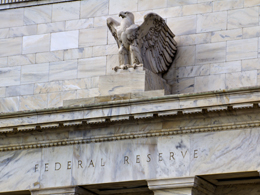 All eyes (at least in the economics world) are on Janet Yellen today as she sits down to update Congress on what the Federal Reserve is doing.
All eyes (at least in the economics world) are on Janet Yellen today as she sits down to update Congress on what the Federal Reserve is doing.
What will she say? When are rates going up?
What Yellen says will no doubt be couched in what's known as “Fed speak.” Alan Greenspan put it like this: “I guess I should warn you, if I turn out to be particularly clear, you've probably misunderstood what I've said.” Traditionally, though, the Fed chair has been a bit more straightforward in the written version of the testimony, which is released before the Congressional session. Let’s take a look.
A decidedly more upbeat tone
Notably, Yellen's written testimony is considerably more cheery than the recently released notes from the last Federal Open Market Committee meeting. When those notes were widely interpreted as dovish— meaning the Fed was less likely to raise rates soon—rates ticked down again, and stocks ticked up. The written testimony, along with whatever Yellen says today, could change that.
According to the testimony, “[c]onsiderable progress has been achieved in the labor market.” Lower oil prices are mostly about “increased global supply rather than weaker global demand.” International economics, despite the risks, “does not exclusively reflect downside risks.”
Translation: The employment market is doing very well; lower oil prices are a stimulus, not a sign of trouble; and the rest of the world may well do better than anyone thinks. Yellen can’t come right out and say that, of course, but it’s a reasonable take on what she meant.
Would a rate increase even matter?
Clearly, the Fed is getting closer to raising rates. The written testimony points toward June. But should we, as average investors, really care? Given the amount of media attention on the Fed’s actions, this might sound like a dumb question. It must matter, right?
In my view, the Fed’s decision to raise rates matters very little. The Fed acts in response to the real economy, and that’s particularly true in this case. It has determined not to make a move until there’s almost no doubt whatsoever that the economy is back on track.
As a result, the effects of the Fed’s actions should be minimal. Slightly higher rates will not constrain the recovery in any meaningful way. In fact, the Fed’s endorsement of the strength of the recovery should reduce the perception of risk, which could set off another round of investment, further accelerating the recovery.
Although there might well be a minor shock to the financial markets, which still aren’t expecting rate increases until September or later, the effect on the real economy should be minimal.
Getting back to normal
In short, this is a good place to be. In many respects, it’s what the Fed (and the rest of us) has been waiting for. In a normal economy, small changes in interest rates are neither catastrophic nor even particularly interesting. In a normal economy, central bankers are not the center of the news. In a normal economy, other things matter far more than whether the word “patient” is removed from a press release.
When the Fed does raise rates—which, it looks increasingly likely, will be in June—we can all breathe a sigh of relief as we return to a more normal economy. And that will be what the start of success, for the Fed, looks like.


 Print
Print


